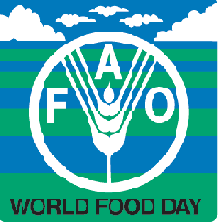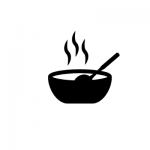
The Hungry Tide: Billions Spent and Millions Still Malnourished
19 October 2010

The 16th of October was World Food Day– a day to take the pledge to “unite against hunger” (as this year’s theme goes). And this couldn’t have come at a more pertinent time. Just last week, the Global Hunger Index (GHI) Report 2010 – a joint initiative of the International Food and Policy Research Institute (IFPRI), Welthungerhilfe, and Concern Worldwide ranked India as 67 out of a total of 84 developing countries and countries in transition, with a value of 24.1 points from its earlier 31.7 points in 1990 – thereby placing India in the “alarming” range of hunger.
This is well below all other South Asian countries except Bangladesh ( China in the 9th position, Pakistan in the 52nd spot and Nepal with 56th rank) and even below several countries in Sub-Saharan Africa, such as Kenya, Nigeria, Cameroon, and war-torn countries of Laos, Cambodia, Congo and Sudan.
A multidimensional index for measuring global hunger and malnutrition, the GHI combines three equally-weighted indicators, namely the proportion of undernourished population reflected in calorific deficiency, the prevalence of underweight children under the age of five, and finally the mortality rate of children under the age of five. The index thereby takes into account the nutritional status of not just the population as a whole, but also focuses on a particularly vulnerable group –children.
While the report itself acknowledges this, the picture should be taken as indicative of the situation – rather than a current assessment as up-to-date data on global hunger is just not available. However, in a country that spends crores of rupees every year for improving health and nutrition of children as well as on food security, the report does give a damning picture.
Let’s put this in perspective. Table 1 outlines some of the main schemes dealing improving health and hunger and the amount of money being allocated for them.
Table 1.
|
Scheme |
Funding |
| National Rural Health Mission (NRHM)
Includes components of immunization for children, reproductive and child health project. |
NRHM budget as a whole has more than doubled since FY 2005-06.
Rs. 250 crores was allocated for routine immunization in FY 2009-10, up from Rs. 177 crores in 2005-06.
|
| Janani Surakha Yojana (JSY)
Aims at reducing maternal and neo-maternal mortality by giving cash incentives to expecting mothers to undertake institutional delivery. The number of JSY beneficiaries has increased from 7.39 lakhs to almost 9.2 million in 2009-10.
|
Rs. 1,241 crores was spent on JSY in FY 2008-09. |
| Food Subsidy
There are a number of schemes that exist to distribute food grains to vulnerable sections of the population, including the Targeted Public Distribution System (TPDS)-which provides 35 kgs per month of subsidised food grains to all families identified as living below the poverty line through fair price shops), the Antodaya Anna Yojana (AAY) for the poorest of poor families etc.
|
Rs. 55,578 was allocated for food subsidy in FY 2010-11.
The total stock of food grains –lying in the central pool (including those in storage and transit) is Rs. 428 lakh metric tonnes. |
| Integrated Child Development Services (ICDS)
One of the world’s largest programmes for early childhood development, designed to provide young children with an integrated package of services including supplementary nutrition, healthcare and pre-school education. |
Between 2000 and 2010, Rs. 35,000 crores have been allocated for Integrated Child Development Services ( ICDS)- In FY 2009-10 itself, Rs. 4,022 crores was spent by states ICDS in general and Rs.7,867 crores on the supplementary nutrition component.
|
Moreover, in an order dated November 28th 2001, the Supreme Court converted the benefits of nine food-related schemes (including TPDS, AAY, and ICDS) into “legal entitlements” and directed the State governments to fully implement these schemes as per official guidelines.
Yet despite this:-
- India has over 230 million undernourished people. (FAO, State of Food Insecurity in the World, 2008). In 2005-06, 44 percent of Indian children under the age of five were underweight and 48 percent were stunted. In fact, the figures would be higher if we were to take India’s norms for hunger – defined as a minimum of 2400 kilocalories per day as opposed to FAO’s 1800 kilocalories per day.
- Every year 2.5 million children die in India, accounting for one in five deaths in the world.
- To put it in a global perspective, India is home to 27 percent of the world’s undernourished population and a staggering 42 percent of the world’s malnourished children and 35 percent of the developing world’s low-birth weight infants.
Clearly, the social security net and delivery functions just don’t seem to be working in the right manner. So where does the problem lie? There are broadly 4 main factors.
- Firstly, there seems to be a lack of prioritization of nutrition in political and policy processes. Take for example the TPDS. Its focus has always been on rice and wheat. As a senior fellow at IFPRI noted, the public distribution system (PDS) is more of a grain policy than a nutrition policy. The same seems to be true of the upcoming Food Security Bill. In fact, the minutes of the meeting of the Empowered Group of Ministers, responsible for drafting the National Food Security Bill explicitly (and shockingly) stated in Section 2.1(a) “The definition of Food Security should be limited to the specific issue of foodgrains (wheat and rice) and be delinked from the larger issue of nutritional security.” !!! How do we think we can reduce global hunger if our policies towards hunger categorically don’t want to deal with nutrition?
- Second, is the problem of targeting. According to the report, recent evidence suggests that there is a thousand day window of opportunity (spanning from -9 to +24 months) for improving child nutrition. This is the period when children are in greatest need of adequate amounts of nutritious food, preventive and curative health care, and age-appropriate care practices. However, even the ICDS programme, meant to deal with under-nutrition targets children mostly after the age of three, when the effects of under-nutrition are largely irreversible.
- Third is the lack of a holistic approach for solving malnutrition.To achieve sustainable improvements in child nutrition, decision-makers must tackle the underlying causes of under-nutrition: food insecurity, insufficient care for women and children, and limited access to healthcare and a healthy environment through a convergent package of interventions. In India however, while we have a number of schemes, each scheme is running, somewhat disconnected from the rest. While immunization scheme is run by the Ministry of health and family welfare, the ICDS scheme is run by the Women and Child Welfare Department. It has also been ascertained that gender inequality and malnutrition are highly correlated. Societies with higher levels of empowerment, tend to provide better care of children. With India ranking 112 out of 134 nations in the Global Gender Gap Report 2010, it is essential to tackle the problem of gender inequality along with programmes to improve child nutrition.
- And finally, even within the existing schemes, accountability mechanisms are essential to ensure that the monies being pumped into the system, get spent properly and reach the targeted beneficiaries.
On the 2nd of October, ICDS celebrated its 35th anniversary. As the world approaches the 2015 deadline for achieving the Millennium Development Goals (MDGs) – it’s time for India to rethink some of its policies so that the fight to remove global hunger can be adequately achieved.
Avani Kapur is Senior Research and Program Analyst at the Accountability Initiative.





